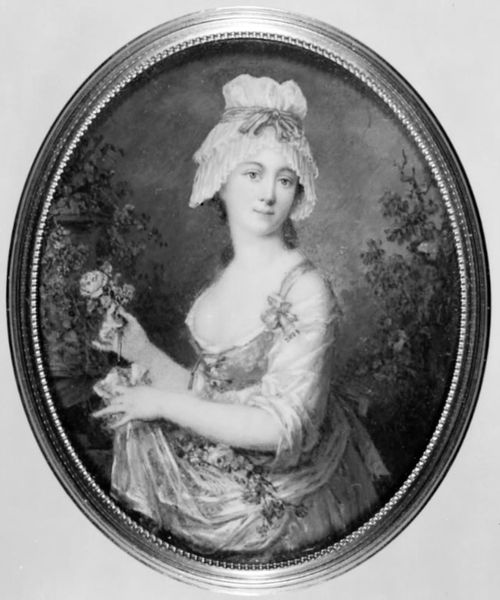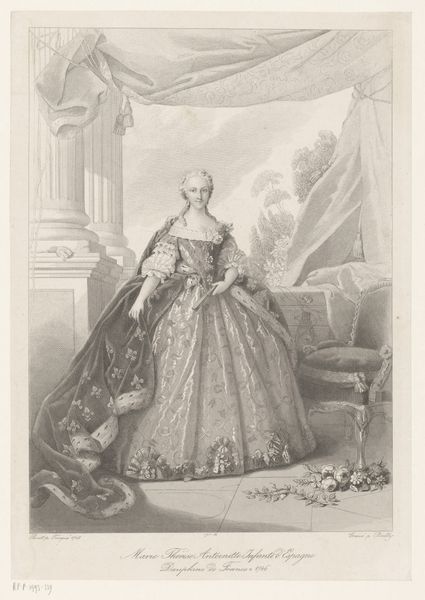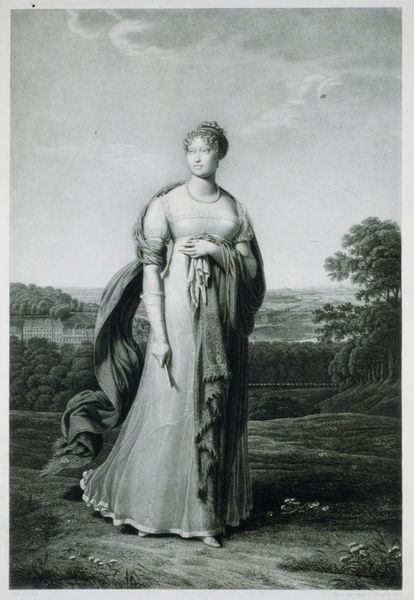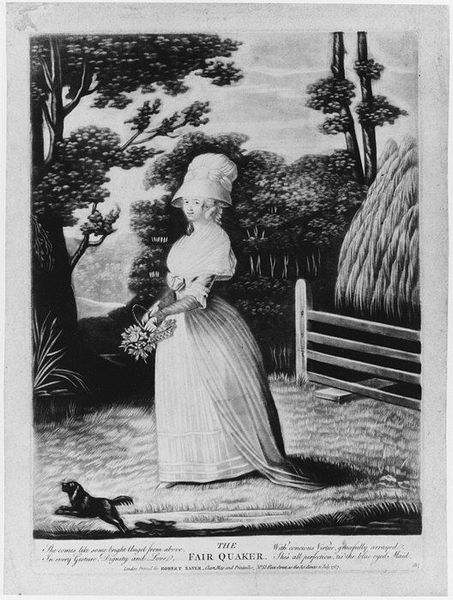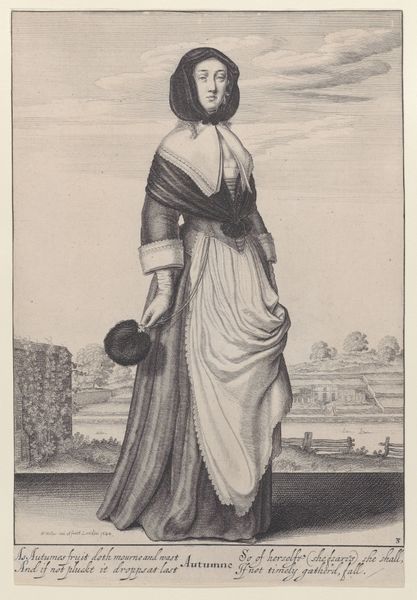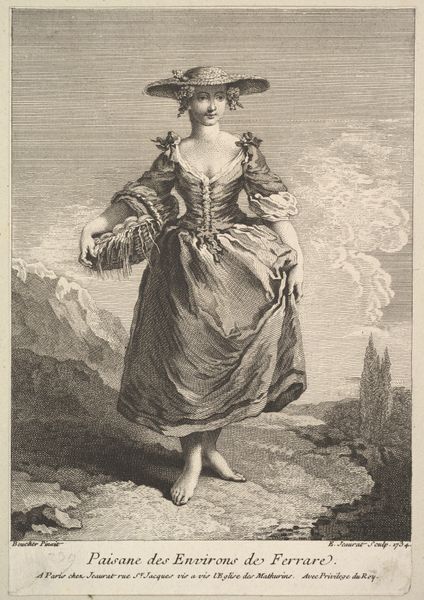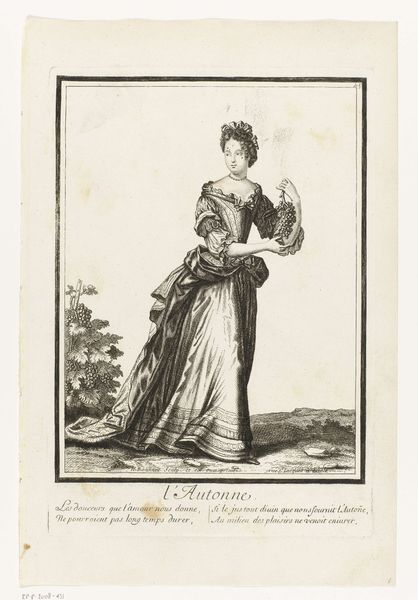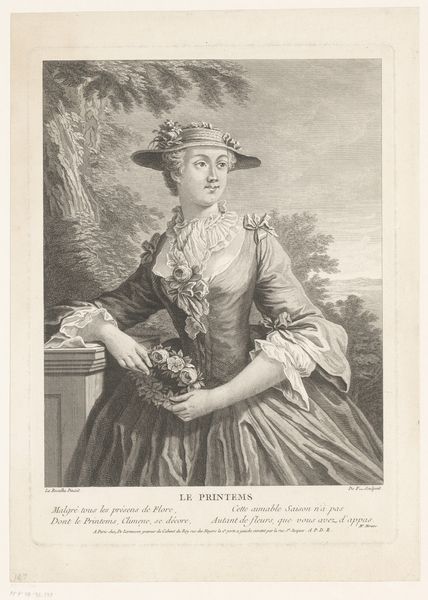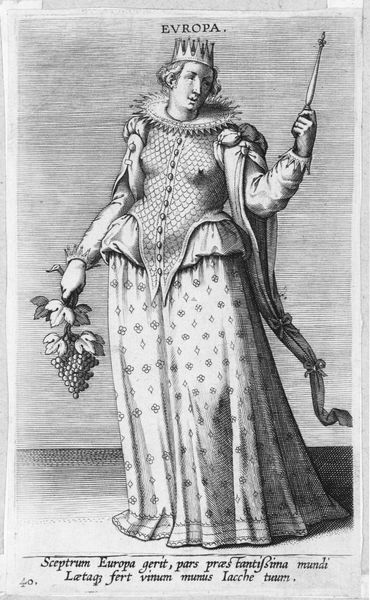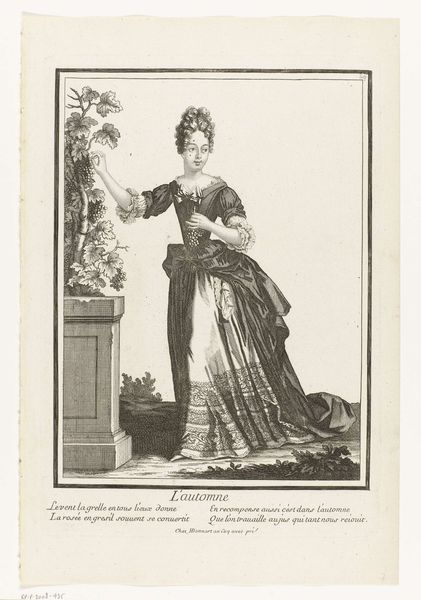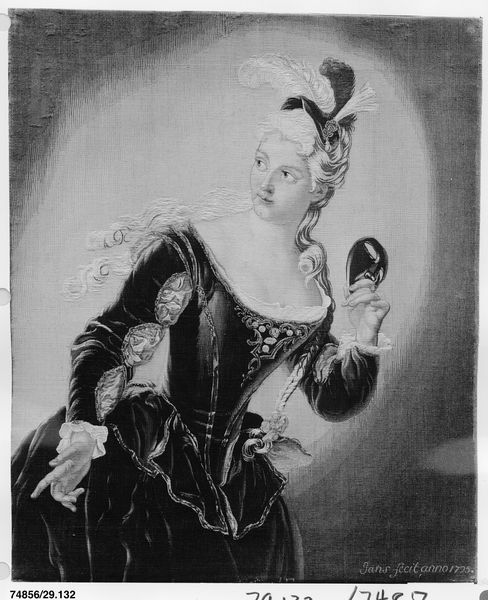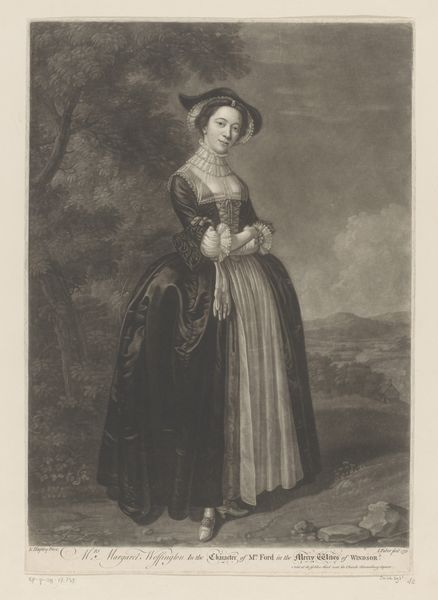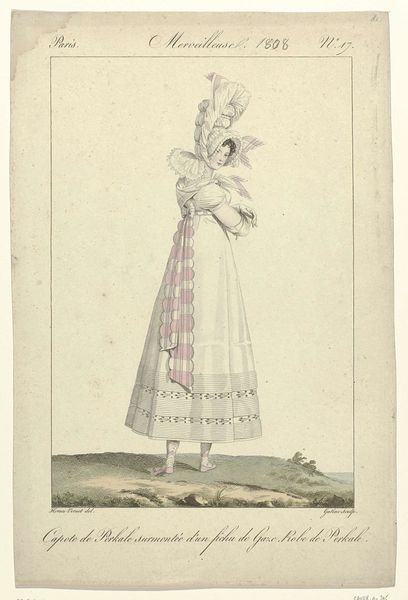
Dimensions: 12 15/16 x 9 13/16 in. (32.9 x 25 cm) (image) 14 5/16 x 10 5/16 in. (36.3 x 26.2 cm) (sheet)
Copyright: Public Domain
Editor: Here we have "Summer," an etching and engraving from 1783. At first glance, I notice the stark contrast between the elaborately dressed woman and the field worker in the background. It makes me wonder, what exactly is being celebrated here? Curator: That's a fantastic question. This contrast speaks volumes about the social hierarchies of the late 18th century. We see a fashionable woman embodying 'summer' as a season of leisure and plenty, but her elegance is predicated on the labor of someone else, isn't it? How does this relationship between the foreground and background figures resonate with contemporary ideas about labor and class? Editor: It’s unsettling, almost as if the image normalizes this unequal distribution of work. The woman's ornate clothing, compared to the worker's plainness, highlights a significant power imbalance. Is the romanticized presentation of nature meant to distract us from this reality? Curator: Exactly! Think about Romanticism’s frequent focus on nature. Was it truly about celebrating nature for all, or a carefully curated view primarily accessible to the privileged? Consider the history of landscape art—often commissioned by landowners, projecting power and dominion. How might this lens change our understanding of this piece? Editor: I never considered how class plays into the portrayal of nature. I suppose the celebration of “summer” here becomes a symbol of wealth and the ability to enjoy leisure. It challenges my assumptions about Romanticism as this pure, egalitarian movement. Curator: Precisely. By examining the social and historical context, we can uncover the subtle political and social messages embedded within seemingly innocent images. Now, considering this newfound understanding, does the artwork still evoke the same feeling of pastoral beauty as before? Editor: No, not at all. It makes me reflect on who gets to define beauty and at whose expense. I'll never look at images of the countryside the same way again. Curator: Excellent. Analyzing art through this lens helps us unpack dominant narratives and prompts us to ask critical questions about the world around us.
Comments
No comments
Be the first to comment and join the conversation on the ultimate creative platform.
